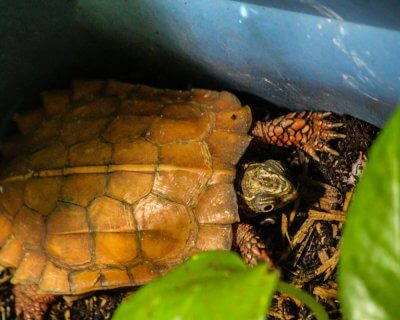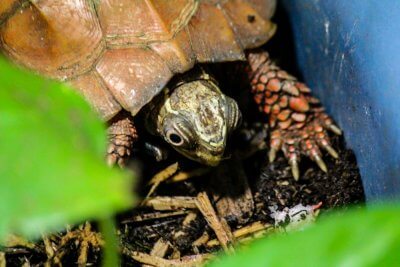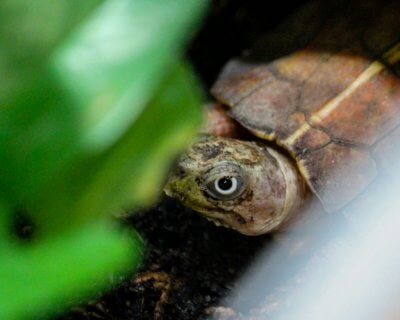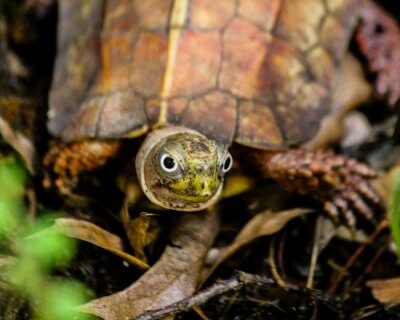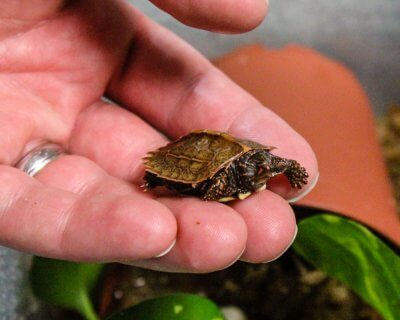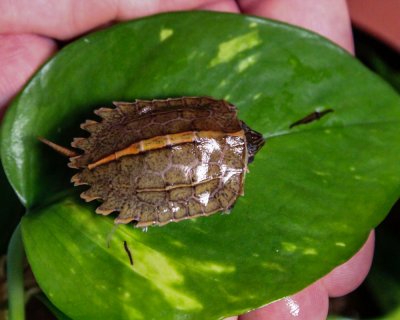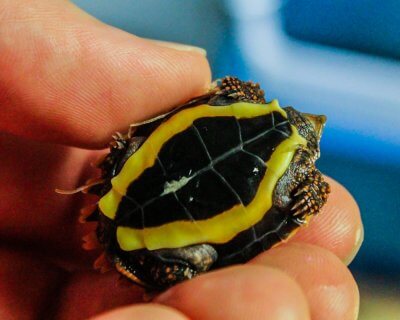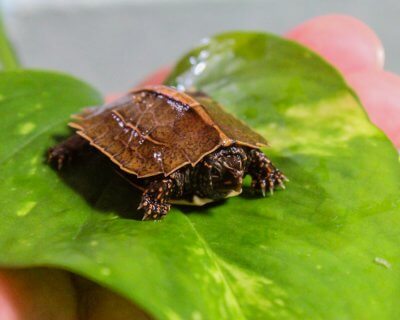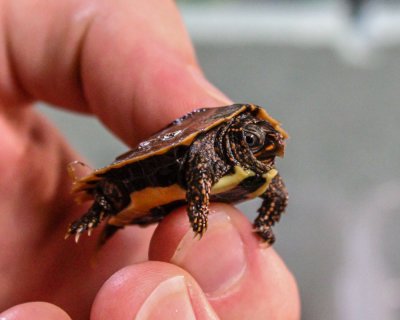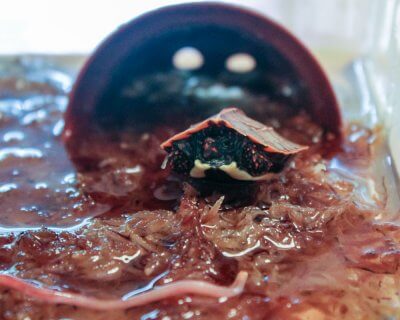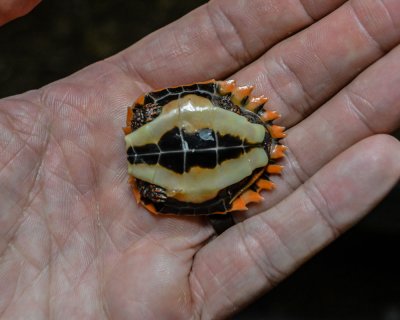Geoemyda spengleri
Assurance colony for the Vietnamese Black-Breasted Leaf Turtle
Project Summary
Geoemyda spengleri, commonly known as the Vietnamese Black-Breasted Leaf Turtle, is endemic to Southeast Asia and is one of the world’s smallest turtles. This species is listed as endangered on the IUCN Red List and populations are at risk of being lost. In 2013, theTurtleRoom’s Anthony Pierlioni and Steve Enders began the Geoemyda spengleri Project in order to produce offspring to build an assurance population. The current goal is to work with the Association of Zoos & Aquariums (AZA) to grow the size and genetic diversity of the assurance population of Geoemyda spengleri. In the future, we would like to see captive animals in the US separated by locality, making the population more valuable to conservation. The project requires funding for enclosure design, food, and animal enrichment. With more than 20 animals that need to be housed individually, the need for these items is always there. We are currently in the process of building a Geoemyda spengleri housing system that provides everything they need and allows for keeping 16 adult turtles in individual enclosures.
Staff of theTurtleRoom work with zoos from around the country as part of the AZA’s Species Survival Plan (SSP) for the species. We have sent offspring to AZA institutions and received animals from zoos as well. We also collaborate with researchers and conservationists from around the world in our work with spengleri, including the European Studbook Foundation and researchers in Europe, Asia, and North America. We started with a single pair and over the years have traded offspring and acquired additional animals to build the project into what it is today, with more than 20 individuals in our permanent group. We have shared our findings along the way, discovering and disseminating information around incubation thresholds, captive diet and other husbandry items, and important natural history, through our writing and website.
Natural History
Geoemyda spengleri is among the world’s smallest turtles, with a SCL length usually not exceeding 11 cm (4.3 inches). The carapace is somewhat elongated, rather flattened, and widest in the posterior half of the body. Its color varies from a yellow-brown to gray-brown and dark-brown. Darker than the rest of the carapace, three well-developed keels run down the carapace, with the vertebral keel being the most prominent. The marginal scutes are strongly serrated, each posterior marginal formed like a sharp tooth. The plastron is black with a yellow border, almost as long as the carapace, and a significant anal notch. There are no inguinal or axillary scutes. The head is flat with a strongly pronounced, but not notched, beak. The color of the head is usually olive to brown with a yellow band extended from the orbits to the neck; these markings are more evident in juveniles and females. This species is most-recognized and well-known for its large, beautiful eyes – particularly in males who display a striking white iris. The iris is often off-white to light-brown in females.
Geoemyda spengleri is found in northern and central Vietnam and southern China in Guangdong, Guangxi, and Hainan Island. This species is almost completely terrestrial, spending much of its time hiding among leaf litter in the forest. This species is rarely seen in water and prefers wild, wooded mountain areas, where it is found close to small creeks and wetlands. Omnivorous in diet, it eats small invertebrates such as insects and earthworms, as well as various fruits. The fondness of snails or slugs in G. spengleri has been noted as well.
Like many chelonians, G. spengleri often do not move unless there is a specific reason for them to do so. They will sit motionless for hours, heads held high and eyes wide open. This statuesque stance is immediately put on hold by the movement of live prey items. The clutch size in this species is just one or two, and there may be up to three clutches in a single nesting season. An occasional three egg clutch has been reported, most often from the North Guangdong population. This locale of G. spengleri has been known to reach an adult size of more than 300 grams. The eggs measure about 43 x 18 mm, and incubation takes between 66 and 135 days, depending on incubation temperature.






